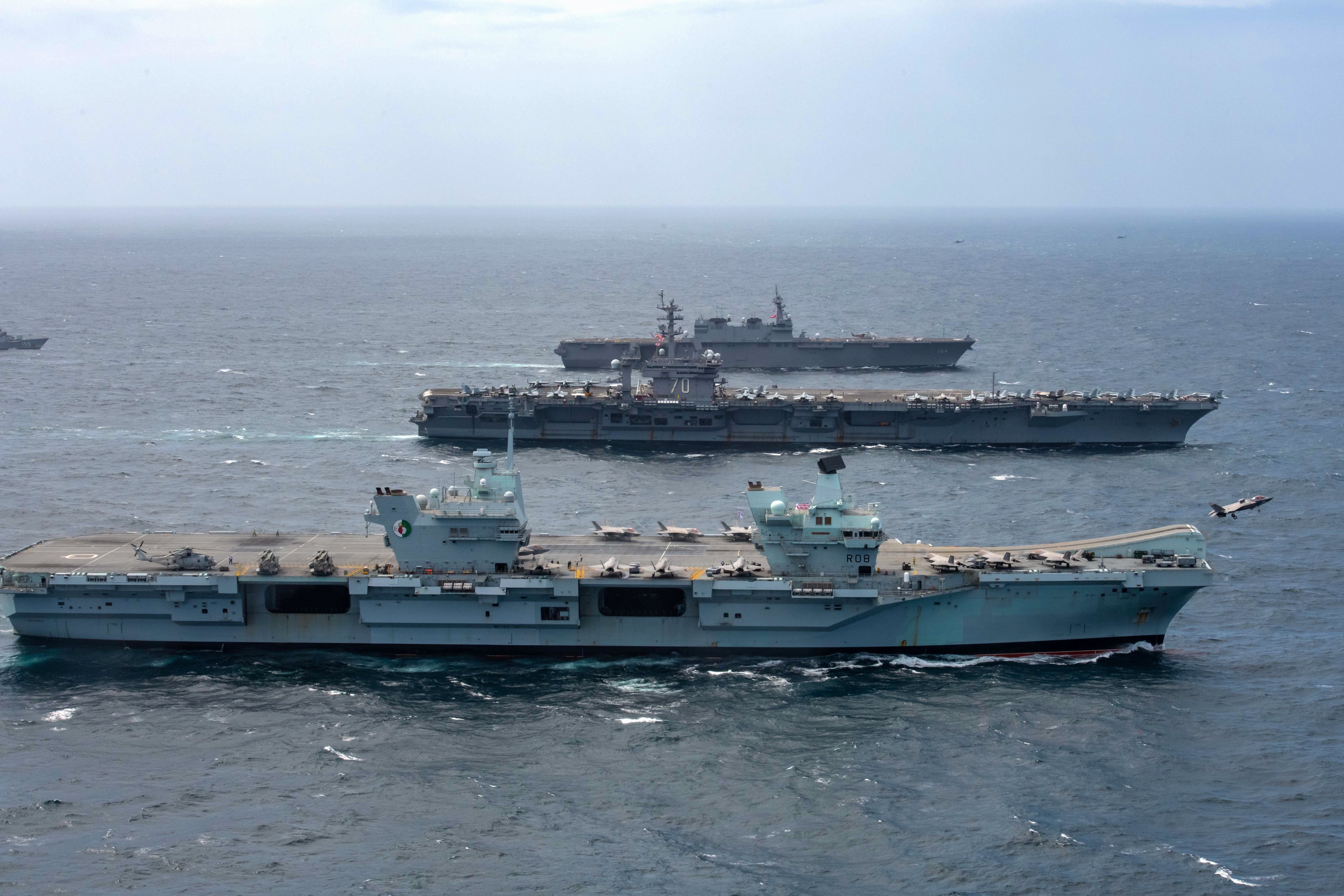
The most remarkable thing about the agreement between Australia, the United Kingdom, and the United States [AUKUS] to share advanced technologies, including nuclear propulsion for submarines, is Canberra’s commitment “to an adversarial role with China,” a former undersecretary of State for political affairs said Wednesday.
“If we’re smart, we’ll take advantage of it,” Thomas Shannon said during a U.S. Naval Institute history conference on the military’s role in diplomacy.
China is Australia’s largest trading partner. But for the past several years, Beijing has been punishing Canberra with blockages of imports from Australia and high tariffs on its goods. China sees it as part of a wide-ranging dispute over its investments in critical parts of the Australian economy and the origins of the COVID-19 pandemic, he said.
Retired Adm. Harry Harris, who served as head of U.S.Pacific Command and later as ambassador to South Korea said, said “AUKUS is here; I think it is brilliant… it is in fact a defense alliance.”
Looking at the agreement that way, he said “now we have a separate grouping” to counter China’s ambitions. The U.S. has five formal treaty alliances already in the Indo-Pacific. They are with Japan, South Korea, the Philippines, Thailand and Australia-New Zealand.
American strategy in the Indo-Pacific “has been to surround China with democratic countries,” Shannon said, as Beijing has become more adept and sophisticated at diplomacy worldwide through its Belt and Road infrastructure initiative. At the same time, China continues bullying its neighbors in territorial and trade disputes to get its way.
“The Quad [the U.S., Japan, India and Australia] is important” in that regard, but “it is still undefined” as to what the four democratic nations will do together economically, diplomatically or militarily in the Indo-Pacific, Shannon said.
“We’re not going to win the strategic competition with China by out ‘Chineseing’ the Chinese [or] out ‘Russianing’ the Russians,” he added, referring to their threats to act militarily and their use of gray zone tactics from disinformation campaigns to cyber attacks on infrastructure. “The power of our example is far more powerful” an influence regionally by defending the rule of law in disputes.
In his keynote address, former Defense Secretary Leon Panetta said “we have done well” historically in showing other nations American values. “The most important strength we have is our values,” he said.
The Biden administration made the correct move “right out of the chute” when it took office, putting new emphasis on alliances and diplomacy, Harris said during the panel discussion.
“The Quad is not NATO, will never be NATO,” Panetta said. But like NATO, it can expand. Harris said the Quad’s size does not necessarily have to remain static at four members. “I liken it to American college football, the Big Ten with 14 teams, Big 12 with 10.”
He suggested that the four agree on a secretariat to act as a gatekeeper as to who should be members.
Retired Army Lt. Gen. Charles Hooper said the four nations have already agreed on a number of working groups to address shared security concerns. One is interoperability of their militaries, as seen in exercises that concluded last fall off India.
“What we need is a more networked approach” where communications can be shared and moved back and forth among the four and command and control arrangements involving all participants, he said.
AUKUS, on the other hand, emphasizes the military in the agreement. With that in mind, Harris added, “we expect to be able to put a nuclear submarine with Australian colors [to sea] within a decade.”
The panelists agreed on the need to better harmonize efforts between the Defense and State departments down to the embassy level.
For years, Deborah McCarthy, now at Harvard’s Advanced Leadership Initiative and a former ambassador to Lithuania, said the State Department’s budget has been “flat and now includes all our essential development aid” for other nations.
There also was an exodus of experienced diplomats during the Trump administration, she added.
Shannon said “we need more people … to deal with everything like religious freedom” to arms control. McCarthy echoed that and said the State Department needs to look to the Pentagon as a model to ensure that its diplomats receive career-long training to be prepared to lead at higher levels.
The key to success for State Department diplomats working with other parts of the administration beyond the Pentagon “is by sharing information with as many people as possible” to buy into the project and carry it out, Shannon said.
“The greatest threat to diplomacy now … is the inability to put ambassadors into the field,” he said. Shannon noted only one Biden administration nominee, Ken Salazar as the U.S. Ambassador to Mexico, has been confirmed. Sen. Ted Cruz (R-Texas) has slowed the process in a dispute with the White House over a Russian gas pipeline to Germany.
Panetta, in his luncheon address, picked up on the current hyper-partisanship of politics. “Today, Washington is at its worst,” he said, adding that the riot at the Capitol on Jan. 6 “sends a message of weakness” to adversaries, allies and partners.
Leadership “is not about party over country, but country over party,” he said.
Panetta added, “too often lately we’ve been governed by crisis.”





